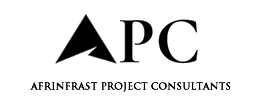
If a commercial fleet accident occurs, having a clear action plan can be the difference between a swift resolution and costly complications
Imagine one of your commercial fleet drivers is on the road, transporting goods or providing a service, when suddenly—an accident happens.
As a business owner, your immediate concerns likely shift to the safety of your driver, the condition of your vehicle, and the impact on your business operations. In critical moments like these, it’s essential to know precisely what steps to take to protect your business and ensure a smooth claims process.
This step-by-step guide will walk you through everything you need to do after a commercial fleet accident, from managing the incident at the scene to navigating the insurance claims process.
1. Ensure safety and assess the ccene
First and foremost, prioritize the safety of your driver and any other individuals involved. If anyone is injured, your driver should call emergency services immediately to arrange medical assistance on-site. They should also assess the damage to the vehicle and any other property affected.
Establishing a documented process for these situations—including contact numbers for emergency services, towing companies, and key internal contacts—can help your drivers respond quickly and effectively.
2. Gather and document information
Accurate documentation is crucial for a successful insurance claim. Ensure your driver collects as much information as possible at the scene, including:
- Photos and Videos: Capture images of vehicle damage, the accident scene, and relevant surroundings. Visual evidence can be invaluable later.
- Driver and Vehicle Information: Record the other party’s vehicle registration, driver’s license details, and insurance information.
- Witness Statements and Contact Information: Collect statements and contact details from any witnesses to support your claim.
- Police Report: If law enforcement is involved, ensure your driver obtains a police report or a reference number.
It’s important for drivers to remain calm and courteous, avoiding any discussions of fault at the scene, as this can be used against you in legal proceedings.
3. Report the accident to your fleet manager or supervisor
Once the immediate safety concerns are addressed, the driver should contact the fleet manager or designated supervisor to report the incident. Prompt communication ensures that all parties are informed, allowing your team to begin coordinating repairs, replacements, or rerouting logistics.
Having a standardized fleet accident report form—either digital or paper-based—readily accessible in each vehicle can help drivers document incidents systematically.
4. File an insurance claim promptly
After gathering all necessary information and reporting the accident internally, it’s time to involve your insurer. Contact your insurance provider as soon as possible and submit all relevant documentation, including:
- Accident Report: Provide detailed accounts from the driver and any witnesses.
- Police Report: If available, this can help establish the facts of the incident.
- Photos and Other Evidence: Submitting visual evidence can streamline the claims process and increase the likelihood of a favourable outcome.
Most insurers have strict deadlines for filing claims, so it’s crucial to act swiftly to avoid delays. If you work with an insurance broker, they can liaise with the insurer on your behalf, ensuring that your claim receives the necessary attention.
5. Coordinate repairs and explore replacement options
Depending on the extent of the damage, your insurance provider may arrange for repairs or vehicle replacement. Many fleet insurance policies include coverage for temporary rental vehicles, helping you minimize disruptions to your operations. Review your policy terms or consult with your broker to understand your options.
If you have an in-house mechanic or a partnership with a trusted garage, collaborate with them and your insurer to assess repair timelines and potential downtime.
6. Review legal obligations and mitigate risks
Fleet accidents can have legal implications, especially if significant injuries or property damage are involved. In such cases, your insurer will typically appoint a legal advisor. It’s essential to cooperate fully with their recommendations to mitigate costs.
If the accident affects customers or third-party businesses, an assessment of your liability may be required. In some instances, settling quickly—though not always popular with clients—can save time and money. The best approach is to consult with the insurer’s legal team to determine the most cost-effective solution.
This is also a good time to reassess risks that could lead to future incidents. Consider implementing additional driver training, updating vehicle maintenance schedules, or reviewing your insurance coverage to ensure you’re well-prepared for the future.
7. Leverage accident management services
When dealing with a commercial fleet accident, time is of the essence. A question worth asking is: Does your broker or insurer use an accident management company to assist with the claims process? These specialized services can handle everything from roadside assistance and vehicle recovery to arranging repairs and even providing replacement vehicles.
By working with an accident management company, you can streamline the entire claims process, reduce vehicle downtime, and minimize disruptions to your business operations. If you’re unsure whether your current policy includes this support, it’s a good idea to check with your broker or insurer to see how they can enhance your claims experience.
Conclusion
Fleet accidents are an unfortunate reality for many businesses, but having a clear plan in place can help you manage the aftermath efficiently. From ensuring everyone’s safety to thoroughly documenting the scene and promptly filing an insurance claim, each step is critical in protecting your business.
As a trusted insurance broker, we are here to guide you through this process, ensuring you have the right coverage to keep your fleet operational with minimal disruption. Contact us today to review your fleet insurance policy or to learn more about safeguarding your business in the event of an accident.
The post What to do after a commercial fleet accident: insurance and legal steps appeared first on Planning, Building & Construction Today.

